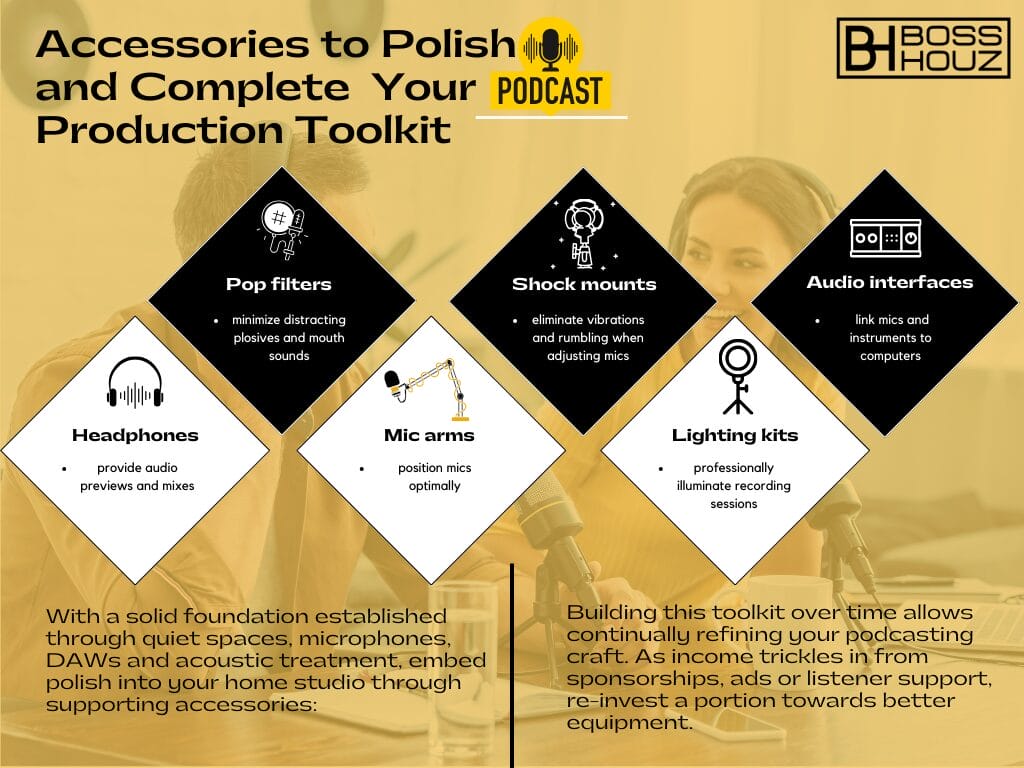Launching an engaging podcast centered around your entrepreneurial journey or niche advice can be an incredibly rewarding endeavor both personally and professionally. Not only can it help establish you as a thought leader, but it also allows you to meaningfully connect with potential customers or clients.
However, putting together an effective home studio setup tailored to podcasting does require some strategic planning and investment. In this comprehensive guide, we’ll explore practical approaches, equipment recommendations, and creative solutions to design and optimize your home podcasting space within any budget.
Table of Contents
Practical At-Home Podcasting Space Setup Advice
With context around listener preferences, equipment trends, and expert insights covered – let’s shift the focus towards actionable podcast space setup recommendations.
Sound Isolation is Paramount
Before investing a single dollar into acoustic treatment panels or podcasting gear, transform your intended recording space into an isolated sound booth. Mitigate external noise infiltration from roommates, pets, nearby traffic, etc.
Start by choosing a quiet room in your home, furthest from distraction sources. For instance, basements or spare bedrooms often provide sanctuaries of silence. Additionally, utilize furniture and fabrics for absorption. Drape moving blankets behind you while recording or build a pillow fort around your mic!
If ambient noises still pierce through, noise-cancelling headset mics like the Beyerdynamic Fox filter them out entirely while recording. You set the expectation for quality, so control your environment first before equipment upgrades.


Room Layout Directly Impacts Audio Quality
Once you’ve established a quiet space, optimize the room layout for audio excellence by considering its size, shape, building materials, windows, and more.
For example, rectangular rooms with wall space allow strategically placing acoustic panels to limit echo and reverberation. Rooms with large glass windows often require heavy curtains to prevent external noises.
I recommend grabbing RoomTune or a similar acoustic analysis mobile app to test your recording area’s audio signature. These provide visual heatmaps indicating problematic regions needing treatment.
Splurge on Your Microphone First and Foremost
As podcasting experts emphasized earlier, microphones endure the biggest beating and scrutiny. So set aside the largest portion of your studio gear budget for the best mic your money allows, even if it means sacrificing aesthetic upgrades for now.
When identifying options, consider the podcast hosts. Will you always record solo or frequently with remote guests? The latter case suits multi-pattern mics allowing switching between cardioid and omni modes.
Likewise, analyze if room dynamics require you filtering out background interference. Noise-cancelling mics add a tactical advantage.
Here are all-in-one microphone value kit recommendations across budgets:
Entry ($100 – $175): Audio-Technica AT2035PK Vocal Microphone Pack
Mid ($300 – $400): Rode PodMic Studio Microphone or Shure MV7 Podcast Microphone
Pro ($700+): Neumann TLM 103 Studio Microphone or Heil PR-40 Package
Multi-Purpose Digital Audio Workstations
With studio-quality mics locked in, the next audio chain component needing consideration is a versatile digital audio workstation (DAW). These act as the central hub for recording, editing, mixing and exporting podcast episodes.
DAWs designed specifically for podcast production strike an optimal balance of power and simplicity. Hindenburg Journalist and Descript both provide quick editing workflows perfect for shows on the go.
For uncompressed multi-track recording flexibility, try more open-ended DAWs like Reaper or ProTools. These support more complex post-processing while remaining straightforward to learn.
Many DAWs offer free trials or discounted educational pricing for students and teachers. So test options before paying full price for any software!
Hanging Acoustic Panels Creates a Warm, Dry Studio Signature
Outside microphones and software, acoustic treatment can make almost as significant of an audible impact. Sound waves bouncing off hard empty walls introduce unpleasant echoes during recording. Placing sound-absorbing panels at reflection points helps deaden reverb.
Investing in 6 to 12 acoustic panels allows tailoring your room’s audio signature through strategic placement. Mix bass trappers, foam squares, and wedge panels for broadband frequency absorption.
For easy DIY installation, hang panels with Command Strip Velcro or nails/screws if permitted. Alternatively, standalone portable vocal booths create instant dry spaces for vocalists.
Accessories to Polish and Complete Your Podcast Production Toolkit


With a solid foundation established through quiet spaces, microphones, DAWs and acoustic treatment, embed polish into your home studio through supporting accessories:
- Pop filters minimize distracting plosives and mouth sounds
- Shock mounts eliminate vibrations and rumbling when adjusting mics
- Audio interfaces link mics and instruments to computers
- Headphones provide audio previews and mixes
- Mic arms position mics optimally
- Lighting kits professionally illuminate recording sessions
Building this toolkit over time allows continually refining your podcasting craft. As income trickles in from sponsorships, ads or listener support, re-invest a portion towards better equipment.
Design Your Dream Studio Within Reasonable Budget
Allocating roughly 25% of your overall home studio budget towards “look and feel” strikes the right balance between form and function. Consider the visual backdrop for filming podcast episodes, live streams, or behind-the-scenes photos.
While elaborate neon signs, brick walls, and concert lighting suit dramatic effect, carefully personalized touches also charm audiences. For example, displays showcasing sentimental memorabilia neatly frame your brand’s backstory.
If recording audio-only episodes without video, focus more on practical soundproofing materials than eye-catching décor. Fancy furniture and lighting matter less than functional acoustic panels when listeners cannot see your recording space.
Leverage Existing Assets Around Your Home
Before running out to purchase brand new podcast gear, thoroughly audit what existing assets around your home allow repurposing:
- Tablecloths and thick comforters help create makeshift vocal booths
- Existing lavalier mics or gaming headsets often record better-than-expected vocal audio in a pinch
- An old iPhone plus Apple Garageband already contain essential podcast editing tools
- Noise-cancelling headphones for listen-backs during recording sessions
- Office furniture and supplies assist show planning/promotion
Improvise D.I.Y. solutions without breaking the bank before deciding certain elements require upgrades. Necessity fuels invention!
Global Podcast Listenership Continues Its Upward Trajectory
Before we dive into the setup details, let’s briefly touch on the immense growth podcasting has seen recently. According to Edison Research’s latest industry report, over 170 million people now consider themselves monthly podcast listeners – up 30 million from 2021.
In the U.S. alone, an estimated 82 million listeners now tune into podcasts every month. Additionally, the average listener spends around 2 hours and 41 minutes listening to podcasts every single week.
So if you’ve considered starting a podcast but always hesitated, there couldn’t be a better time to take that leap of faith. The demand continues to rise exponentially, and listeners crave authentic niche perspectives offered by independent creators and microbusinesses.
Most Listeners Fall Within Two Key Demographics
While podcast audiences are more diverse today than ever before, two demographic segments dominate:
- 51% of monthly podcast listeners are between the ages of 18 and 34. This forward-thinking group appreciates authenticity and meaningful conversations.
- 53 % of monthly podcast listeners identify as male, though the female demographic continues making strides.
So if your target customer persona fits within these age ranges or identifies as male, podcasting presents a tremendous opportunity to directly engage them. That said, podcasts centred around female entrepreneurship or boomer business owners can also gain traction by strategically filling noticeable gaps.
Comedy, Business, and News Reign Supreme Among Popular Podcast Genres


While podcast listeners flock to a variety of genres, Edison’s report highlights three consistently dominate:
- Comedy: Humor-focused podcasts give listeners an amusing escape from stress.
- Business: Aspiring entrepreneurs tune into tactical business advice podcasts.
- News: Listeners crave analysis beyond traditional media’s headlines.
Catering your podcast topic around one of these popular categories makes growth more seamless. That said, don’t limit yourself if you have an unconventional or ultra-niche concept. As long as you strategically target receptive demographics, creativity can set you apart.
For instance, an entertaining, yet tactical podcast on home-based business ownership has tremendous potential if approached thoughtfully. Let your distinct perspective and experiences shine.
Mobile Recording Gives Podcasters Flexibility
As Edison’s report indicates, over 80% of listeners tune into podcasts on their smartphones – whether during commuting, exercise, chores, etc. This mobility has inspired a growing number of podcasters to embrace mobile recording options.
Using smartphones or portable mics enables grabbing high-quality audio from almost anywhere. This gives you, the podcaster, more flexibility in scheduling guest interviews, travel episodes, outdoor recordings, and more.
If interested in mobile podcasting, consider a USB microphone like the Shure MV7 or XLR-ready recorders like the Zoom H5 Handy. Combine them with smartphone editing apps like Anchor or Descript for a powerful on-the-go podcast kit.
Reach Listeners on Multiple Platforms
Gone are the days where Apple Podcasts dominated. Today, listeners discover and access shows across various platforms – from Spotify to YouTube to niche apps.
The more platforms your show appears on, the higher your visibility and potential reach. This does require added effort on the distribution end but maximizes discovery.
When designing your podcast space, ensure your equipment and setup support exporting your recordings into formats acceptable across platforms. Investing in multi-track audio recording options aids this.
Artificial Intelligence Already Impacting Podcasting
While still in early stages, artificial intelligence (AI) increasingly assists podcasters behind the scenes. Smart machine learning algorithms help edit episodes by removing filler words/sounds, improving pacing, fixing audio issues, and more.
AI even shows potential for augmenting hosts by providing talking points based on episode themes or customizing ad reads towards specific listeners. However, ethical considerations around data privacy, consent, and bias exist.
If leveraging these advanced tools interests you, ensure your recording approach captures multi-track stems for flexibility during editing. This keeps human and AI collaborations seamless as the underlying tech continues rapidly developing.
Concluding Thoughts for Podcast Studio Design Ideas
I hope this guide presented practical yet creative podcast setup ideas to inspire your home studio design while optimizing for audio quality, accessibility and longevity across budgets.
Remember, podcasting rewards authenticity. So don’t obsess over perfection. Instead, focus efforts on amplifying the signature perspectives and experiences that only you can provide listeners.
The equipment will catch up over time. But for now, just press record and get your distinct voice out there! Sincere niche advice from the entrepreneurial trenches connects more profoundly than flawlessly engineered filler content.
You can accelerate income from podcasting through select sponsorships plus leveraging episodes across other platforms like YouTube. But remain patient, consistently publish fresh content, respond to listeners, and perpetually hone your on-air delivery.
Here’s to the rewarding rollercoaster ride ahead as you build an audio platform that financially supports your entrepreneurial grit and passions! Your home studio awaits fine-tuning.








